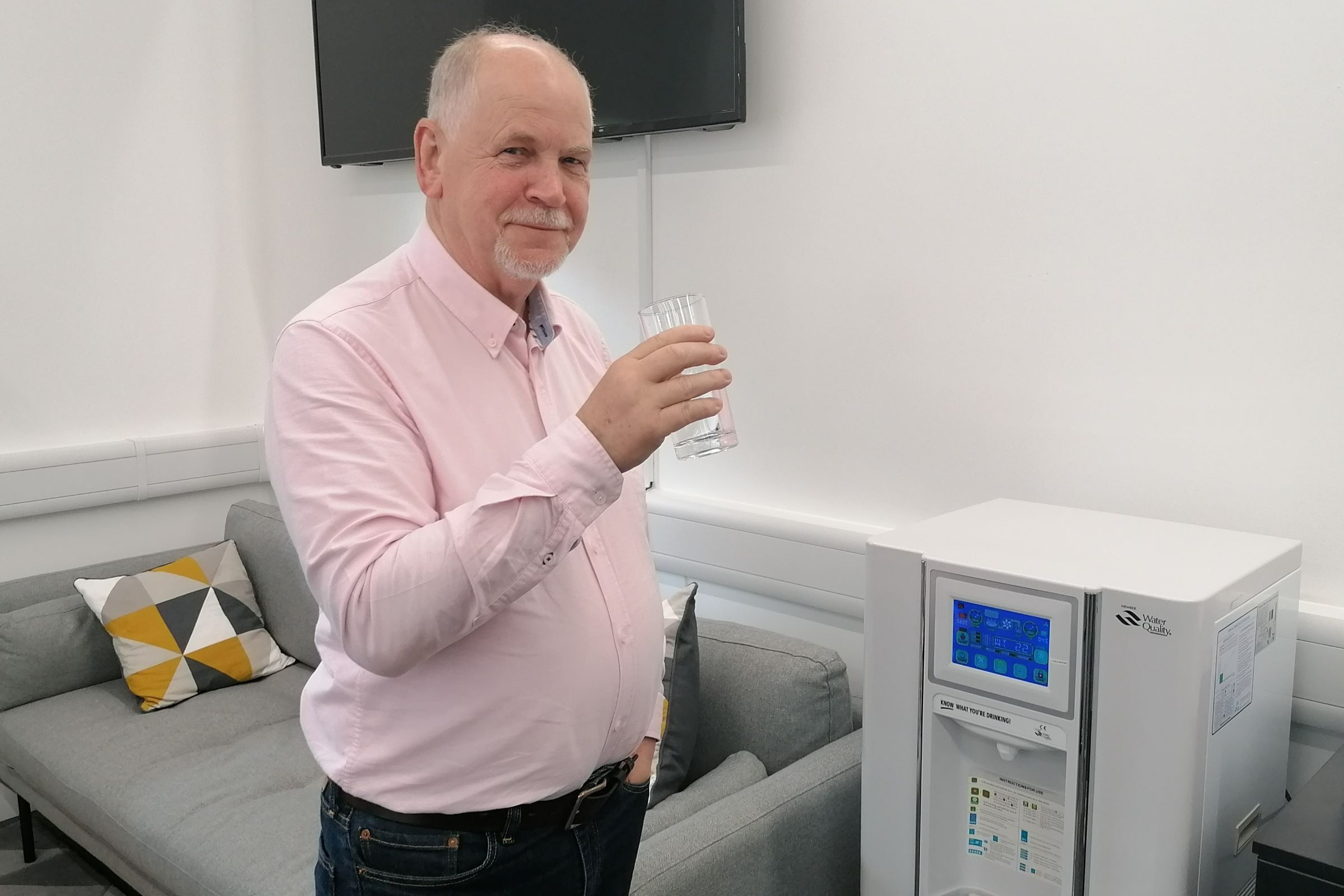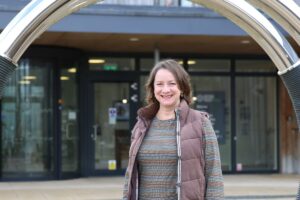Turning air into drinking water?
September 1, 2022

Sounds like magic, but with the right technology we can capitalise on a natural part of the water cycle – condensation – and efficiently draw clean drinking water out of fresh air.
Supported by Barclays Eagle Labs in Kilmarnock, start-up WatAir is using this technology to provide clean drinking water to people more cheaply and with a lower environmental impact than bottled water. Their atmospheric water generators extract water from humidity in the air by condensation, and purify the water by high intensity ultraviolet light and filtration systems that remove particulate matter smaller than 0.01 microns. The system also adds minerals to the water which mimics spring water in many respects.
Supporting innovation
In support of innovation and start-ups across our broader network, The Oxford Trust has installed one of WatAir’s new water coolers in the Barclays Eagle Lab at our Wood Centre for Innovation during World Water Week.
The Oxford Trust CEO, Steve Burgess, says, “It’s great to see another innovation being put in place at our centres. Having both hot and cold drinking water ‘on tap’ should prove very useful in areas of our buildings that are more remote from the central services – it tastes great as well!”
Matt Lucas, Eagle Labs Lab Manager at our centre, is pleased to support innovation aligned to sustainability and says, “In this instance, I am able to showcase another Eagle Lab member’s business while providing sustainable drinking water to the Oxford residents.”
A bigger impact
Aside from convenient office use, potentially the most significant impact of atmospheric water generators and the technology lies in providing clean drinking water to areas where access is limited. According to the United Nations, two billion people – i.e. one in four people – worldwide lack safe drinking water, and 40% of rural areas do not have safely managed drinking water services, despite access to safe drinking water first being recognised as a basic human right by the UN General Assembly and the Human Rights Council in 2010.
Atmospheric water generators are suitable for use in humid areas. Large industrial units, which can generate up to 10,000 litres per day, can be installed in remote areas with poor plumbing infrastructures and can be powered by alternative energy sources such as solar panels or biodiesel generators.
They could also have great benefit and increase water availability during water shortages or times when drinking water services are disrupted, such as after natural disasters or incidents of contamination of water supplies.
For the fortunate proportion of the global population who have easy access to tap water, there are still variations in the quality of the water that flows from taps. While tap water is safely managed in most parts of the world, there are nevertheless concerns over pesticides, herbicides, pharmaceuticals, hormones, and microplastics in water supplies. Consumers may feel more secure in knowing where water is coming from rather than depending on safe upstream management of their water supplies.
Over this past week, World Water Week (23 August – 1 September) has increased attention on addressing one of the biggest global challenges, the UN’s sustainable development goal of ensuring availability and sustainable management of water and sanitation for all. Innovation is and will continue to be an important part of progress toward this goal.
Meanwhile, the goal for installing the WatAir water cooler in our centre is to give Barclays Eagle Labs clients in the Wood Centre for Innovation easy access to water and eliminate plastic water bottle waste. We hope that start-ups in the centre will now have more of those ‘water cooler moments’!



